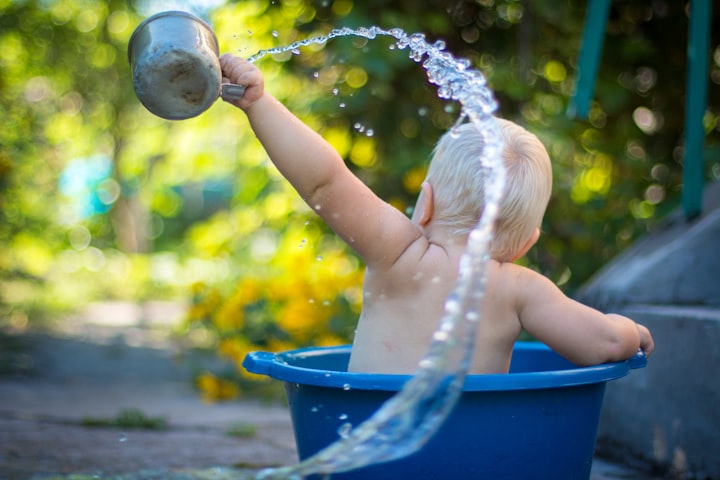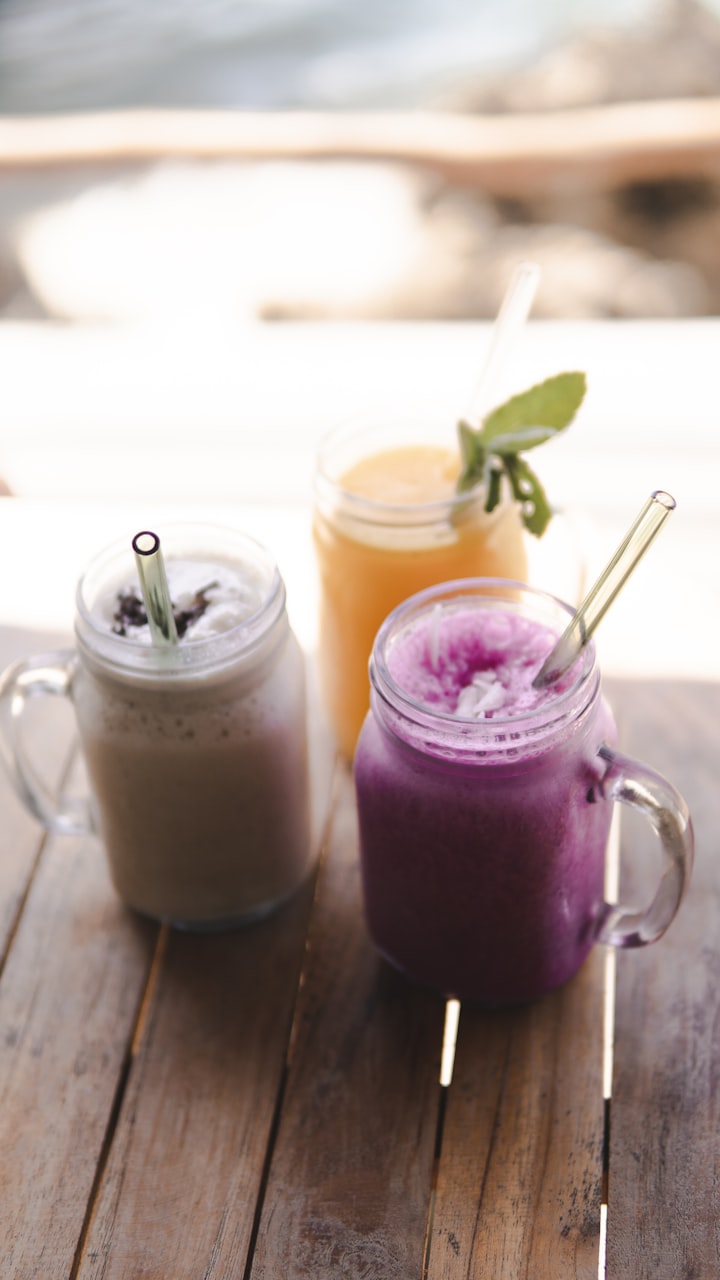Toddlers and Water Play
Seriously, little kids LOVE water!

I don't have little kids anymore but as a mom of four who also homeschooled them...I am still pretty good at keeping kids entertained. Water play is one of the best activities for kids of all ages, but toddlers really get into it.
Of course, you can go to the beach, or maybe you live near a stream, lake, or creek. Here on Long Island, lots of families have pools in their backyard, and kiddie pools are the norm for parents across the country. Water play doesn't have to include any of these, though. Kids love the tub, standing at the sink, or using a hose and bucket in the yard. It's great when the weather is hot, but my kids loved water play on chilly, rainy days, too.
You might be surprised how vital water play is to small children. (If you use the yard for water play and add sand, it gets even more educational! But rest assured that all you need is plain water, some containers, and various utensils to give your child some brain-boosting fun. If you're interested in exactly why water play is so good for kids, here's a quick list:
- Water play helps with motor skills. Play is the child's job, and kids learn how to control their muscles while doing so. Your child will pour, fill, mix, and splash and, in the process, develop large and small motor skills.
- Surprise early math lessons. You might not think about it, but when your child pours water from one container into another, she learns about math concepts like volume. Full and empty, more and less, the fact that an object can displace water and make the container overflow, or that containers of different shapes might actually hold the same amount of water--this is laying the groundwork for future math concepts.
- Don't forget about science concepts while you're at it! Water is a liquid. Water makes sand heavy and moldable. Water can move around and through things (it always finds a path) and will take the shape of whatever it's poured into. Floating and sinking. Ice, liquid, and steam. These are all things that science education will expand on later that your toddler can begin to understand even at such a young age.
- Language and social skills, plus new vocabulary. As your child plays, he will describe what he's doing. He'll find out what a whisk or a sieve does. He will play pretend games that expand his speech and view of the world. If he's playing with friends or siblings, social skills come into play. There might be conflict, but that leads to concepts of sharing, forgiving, and making up.
- Increases focus and concentration, plus a healthy way to manage emotions. Water play is unique in its ability to hold kids' attention at a stage when a short attention span is their defining feature. The sensory aspect of water is pleasing and calming, and if they're feeling frustrated, splashing or squirting water can be a healthy way to release those feelings.
- Water play teaches creative problem-solving. The early years are crucial to developing ways to solve problems, and play is how kids do it. Whether your toddler is figuring out how to pour water using a funnel, trying to float a toy boat with rocks in it, or figuring out why ice melts as it sits in water, they are learning while they're having a blast.
Practical ways to play in water
Most adults get a little antsy when kids are messy. This is totally understandable, but it's important to remember that kids need to be messy! If you just can't stand it, water play outside is the best bet. Kids can wear bathing suits or really any play clothes and forge ahead.
Remember, though, outside water play is dependent on the weather. If it's raining or the wrong season, there goes that. Ideally, water play should be a regular part of every toddler's life, so just know that you can prepare for water play and not have to worry too much about a mess. There are water play tables, but a large tub or bucket works, too.
The kitchen sink is excellent for water play. The kitchen sink is usually much bigger than a bathroom sink, which your child will want for more freedom. Pull a chair (that can get wet!) over to the sink, with the back facing the sink, so it doesn't tip. Then fill the sink about halfway. You can put down towels, rags, or sheets on the floor to catch splashes so your child can play without you stressing out. I loved letting them play at the kitchen sink because I could cook or clean at the same time while they were busy. It also came in handy when homeschooling (or helping with homework) older kids.
There's always the bathtub, too. If you don't want to run a bath, let them play with a bucket of water and containers in the tub. Of course, combining water play and bath time is natural, and my kids loved bringing plastic animals and "guys" into the tub. You could fill it very slowly to let your child play in the running water. My kids would sit in a bath till they were prunes if we would allow it. This brings up the point that bath time water play does require careful, constant supervision, whereas container water play enables you to keep a more casual eye on things and get other chores done.
Ways to make water even more fun
Plain water is entertaining enough, but it's the add-ons that keep kids splashing for hours. You definitely want to give them various cups and spoons to play with because pouring and stirring and the like will spur their imaginations and let all the nifty educational gains already mentioned happen. You can use whatever is in your kitchen (stick to plastic and metal, of course), or you can use your child's toys like stacking cups or toy kitchen utensils. Plastic dolls and animals are always helpful for games, and small balls that float are fun. Use your imagination, but some suggestions are:
- whisks
- funnels
- measuring cups
- a water bottle
- serving spoons
- ladle
- sponges (squeezing out water is great fun!)
- bowls or cups of different shapes and sizes for comparison
- Koosh balls
- rubber ducks
- things collected from nature, like flowers, pine cones, sticks, and bark
- water balloons
Bubbly water is always a lot of fun for kids. Bubble bath or dish soap works fine. They can "build" with the suds, give toys a bath, or pretend they're playing in a snowstorm. For older kids, give them straws and let them make the bubbles bigger by blowing into the water. (Toddlers would probably end up drinking it.)
Food coloring amazes kids. Let them drip it into the water, see how it spreads, or mix a few colors for a quick color theory lesson. Even if you just use one color, they'll be thrilled at playing with red water!
Food color mixes with shaving cream for easy-clean "paint." Buy cheap shaving cream (the old-fashioned white foam that sells for a dollar is perfect) and mix it with a few drops of food coloring. You can use a muffin tin to hold several colors and see which colors blend nicely, too. Give them paintbrushes or let them use their hands to paint on objects they're playing with, or do it in the bath, and they can paint the walls of the tub or their body. The best part? It rinses right off, no worries.
Finally, let them explore floating and sinking. Use boats, toy animals, pebbles, coins, marbles, corks--anything you have on hand. Talk about why some things float while some don't. You can tell them that people float, and that's how they learn how to swim (if they've been swimming recently, they might know something about it) and explain water wings and life jackets for those learning.
So the next time an afternoon with small humans feels endless, remember that water play will not only entertain, it is educational and developmentally valuable. Decide on the best water play area for your kids, gather a few supplies, and dive right in.
About the Creator
Jennifer Eager
I'm a freelance writer who loves reading, theater, animals, and getting outside. Married to my college sweetheart, mom to 4 kids who aren't very kiddish anymore. Politically the furthest left you can imagine, I have zero patience for fools.






Comments
There are no comments for this story
Be the first to respond and start the conversation.